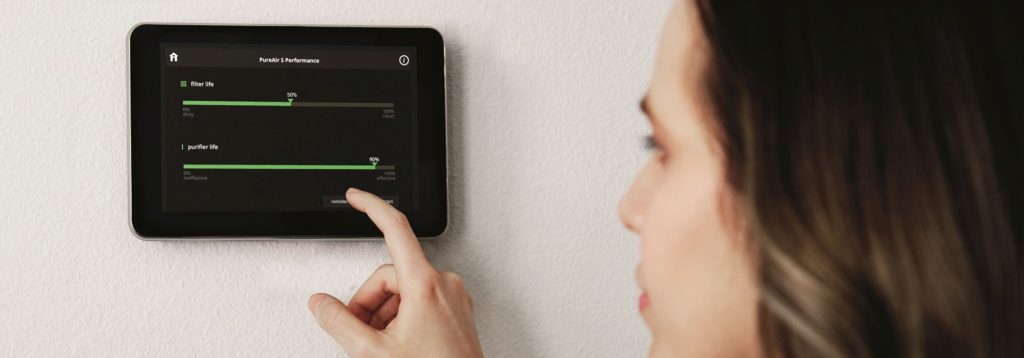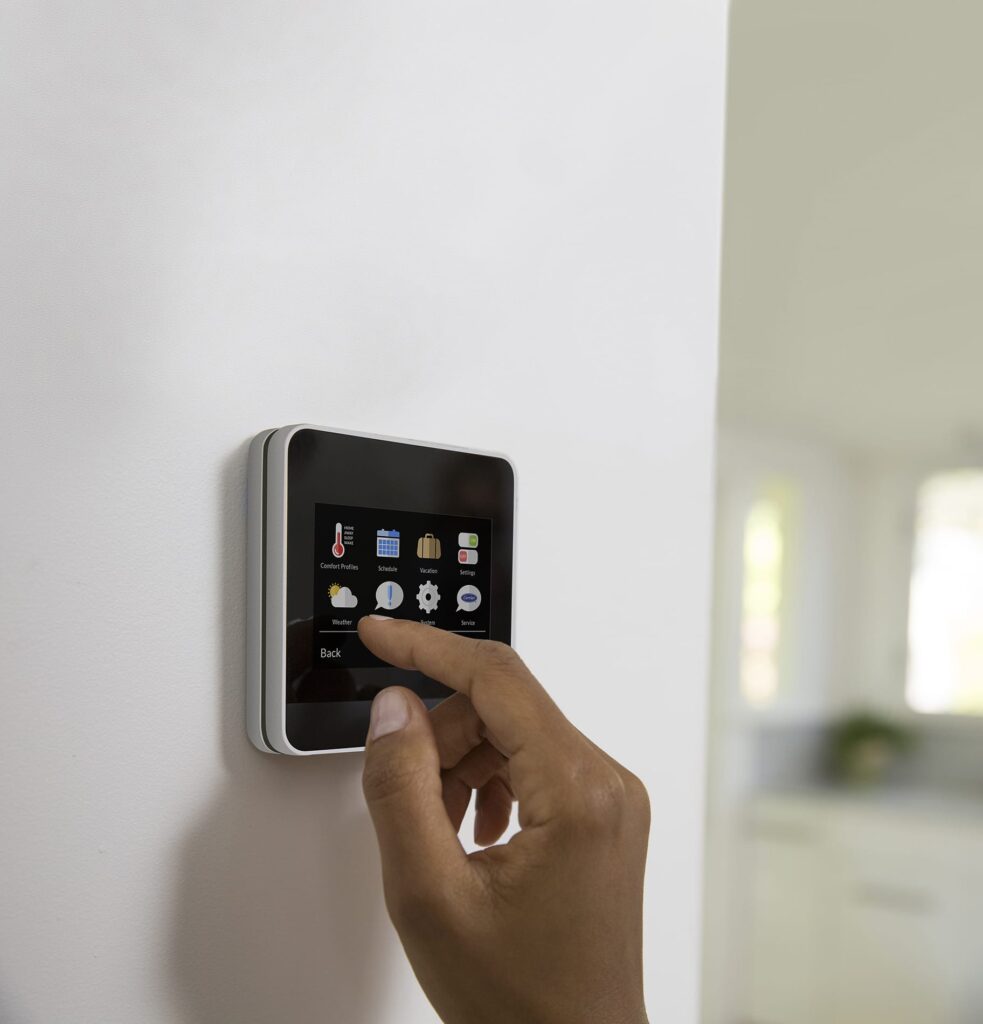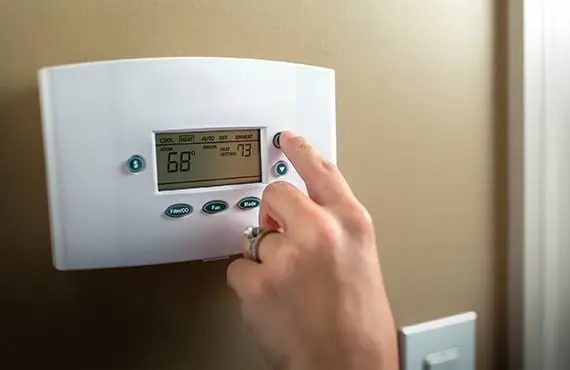The fan setting on your thermostat controls your HVAC system blower. The blower helps circulate hot or cold air throughout your home until the temperature on the thermostat is reached. There are two settings on your thermostat to control the fan – auto or on.
AUTO means that the fan turns on automatically only when your system is heating or cooling air. Once the thermostat reaches the desired temperature, the entire system shuts off until the next cycle.
ON means that the fan is constantly on and blowing air when your HVAC system is not heating or cooling air.

Running your fan on AUTO or ON is a personal preference. We’ve provided the pros and cons of each setting option, so you can decide which one is best for you.
Pros to Setting Your Thermostat Fan Setting to AUTO
Keeping your fan on AUTO is the most energy-efficient option. The fan only runs when the system is on and not continuously.
There is better dehumidification in your home during the summer months. When your fan is set to AUTO, moisture from cold cooling coils can drip and be drained outside. If your fan runs continuously, moisture does not have a chance to drip outside. It blows back into your home, and your AC works hard to remove extra moisture from the air.
You’ll need to replace your furnace filter more frequently. Air is continually being cleaned, causing filters to get dirty more quickly. A clogged filter also makes your blower work hard and use more energy.
Cons to Setting Your Thermostat Fan Setting to AUTO
You may notice that there is less even distribution of hot or cool air. Once the air temperature reaches the temperature on your thermostat, the fan stops moving air throughout your home.
The blower motor fan may wear out faster due to more frequent starts and stops.
Pros to Setting Your Thermostat to ON
Allowing the fan to run uninterrupted, there is a more even distribution of warm or cool air circulating through your home. This will help reduce hot or cold spots within your home.
There could be reduced stress on the fan from less frequent starts and stops, which could potentially help extend its lifespan.
The air could be cleaner in your home if it is pulled through a filtration or UV light system.
Cons to Setting Your Thermostat to ON
It may cost you more money to run your fan nonstop. Some systems have blower motors that are designed to run in the ON mode, while others are not rated for continuous use.
In the winter, you may notice cool air coming out of your vents. This is because the air temperature is similar to the space temperature, so your home will feel cool.
You’ll need to replace your furnace filter more often as air is constantly being blown through it.
During the summer, any ducts that run in your attic or close to your outside walls can fill with warm air, blowing hot air into your home. Your HVAC system may now need to run more to offset the additional heat.
Have questions or need service on your HVAC system?
Call Rhoads Air Today to Schedule Service
Energy Efficiency Nuances
Beyond the basic “Auto” vs. “On” setting, there are further ways to use your HVAC system for both energy efficiency but also to save money in the long run.
There are generally two types of HVAC systems on the market today: high efficiency systems that have variable speed blowers and systems with smart thermostats.
Variable Speed Blowers
Unlike single-speed blowers that operate at a constant (and often high) speed, variable speed blowers can adjust their airflow based on the heating or cooling demand
By running at lower speeds for longer periods, they use significantly less electricity and also provide more consistent temperatures and better humidity control, reducing temperature swings and that “blast” of air feeling.
Smart Thermostats
A smart thermostat offers additional control, convenience, and savings with proper usage.
Most can be operated from your smartphone or tablet, allowing you to adjust the temperature remotely and avoid wasting energy heating or cooling an empty home. This is particularly useful if you travel or have an irregular schedule.

Some smart thermostats use geofencing to detect when you’re approaching home and start adjusting the temperature so it’s comfortable when you arrive.
Additionally, smart thermostats more easily allow you to track your energy usage, providing insights into your heating and cooling habits and helping you identify ways to save even more.

